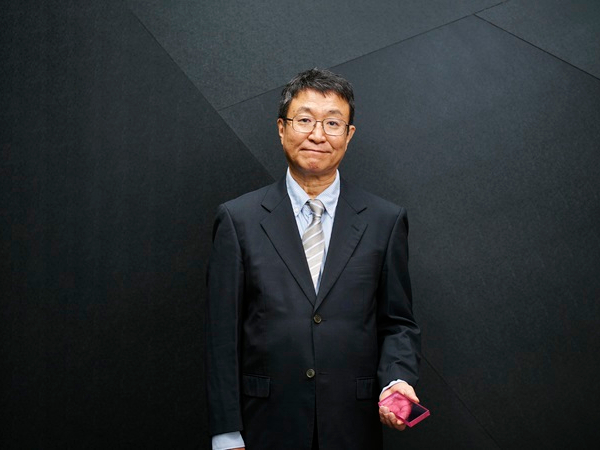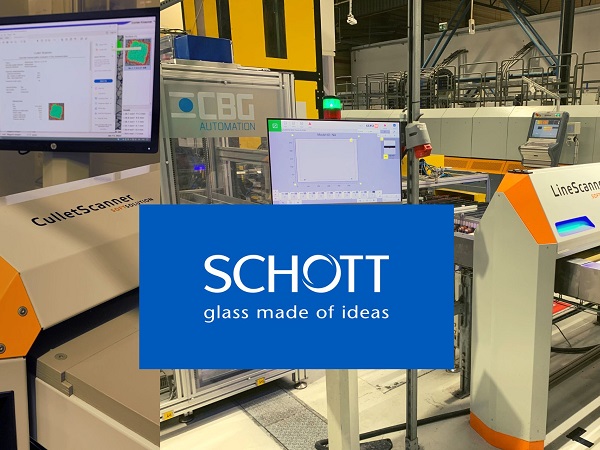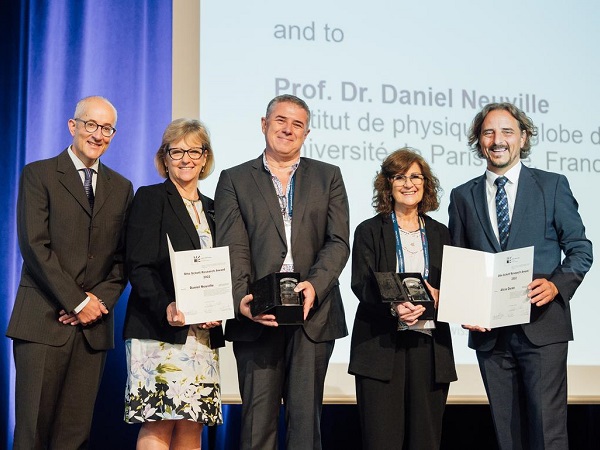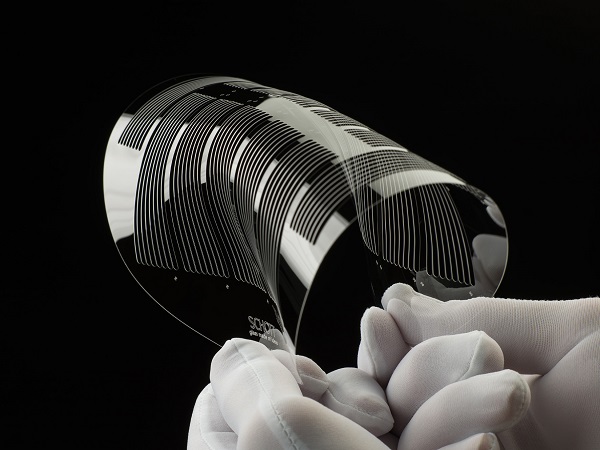Date: 29 October 2013
This glass was developed by Advanced Optics, the division of SCHOTT that served as the starting point for the company founded by Otto Schott more than 125 years ago. This glass on roll will be used to illustrate state-of-the-art technology and the power of innovation of German companies in a future exhibit entitled “Glass Technology”.
This display is a roll of glass 10 meters in length and only 50 micrometers thick. “The unique thing about extremely thin rolled glass is that it is highly flexible, yet sturdy. We achieve this by using so-called down-draw technology in manufacturing. The rolled glass is neither laminated, coated, nor otherwise stabilized and thus represents glass in its purest form,” explained Uwe Wilkens, Senior Manager Strategic Marketing at SCHOTT, when he handed over the new exhibit.
.jpg)
Left: Dr. Margareta Benz-Zauner and Dr. Ulrich Kernbach (both Deutsches Museum); center: Dr. Roland Langfeld and Uwe Wilkens (both SCHOTT AG); right: Prof. Dr. Helmut A. Schaeffer, the current president of the consulting committee "Glastechnik" in the Deutsches Museum
“We are delighted to accept this donation to our museum by SCHOTT,” said Dr. Ulrich Kernbach, Department Head of Exhibits/Collections at Deutsches Museum. “The new exhibit fills a gap in our collection because, up until now, we have not owned an example of the down-draw technique that is used to manufacture flat glass in the highest possible quality. Thanks to its astounding flexibility, this rolled up glass is perfectly suited for encouraging visitors to the museum to ask how it is manufactured. At the same time, it stands for the amazing possibilities this fascinating material offers,” he added.
Background information on rolled glass:
A special drawing technique, the down-draw method, is used to manufacture this ultra-thin glass. This calls for the glass to be drawn down directly from the melting tank through a nozzle into its final shape. This produces fire-polished glass surfaces with a roughness of less than one nanometer without any subsequent polishing.
This new supply form for ultra-thin glass on a roll opens up many possible applications. For example, electronic switches can be applied using a continuous printing technique. This principle allows for lighting elements on the basis of OLEDs (Organic Light Emitting Diodes) to be printed onto thin glass. This calls for the glass to be guided off the roll and past the various processing stations using roll-to-roll technology and then rolled up again afterwards. Renowned companies, mainly from Asia, are currently testing this innovative material for this and other possible applications.
For more information on ultra-thin glass from SCHOTT:
www.us.schott.com/advanced_optics/ultra-thin-glass
For more information on the glass exhibit at Deutsches Museum:
www.deutsches-museum.de/en/exhibitions/materials-production/glass-technology







Add new comment